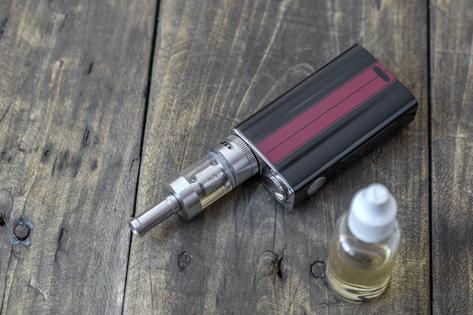Mayo Clinic Q&A: Vaping and teens
Published in Health & Fitness
DEAR MAYO CLINIC: I am a former smoker who began smoking in high school. I quit a few years ago after a lung cancer scare. As a father, I have often shared with my children about the dangers of smoking. Recently, I overheard my son talking to his friends about vaping. Should I be as concerned about vaping as I am about smoking cigarettes?
ANSWER: Vaping is the term often used to describe the act of using an electronic cigarette. E-cigarettes are battery-operated devices that heat a liquid solution — usually, but not always, containing nicotine — turning it into a vapor that can be inhaled. If the base nicotine mixture is not palatable, many flavors, such as mint, apple and others, can make vaping attractive, especially to adolescents.
Unfortunately, today’s teens, and even tweens, often know more about vaping than their parents.
E-cigarettes and vaping are part of a trend going back at least nine years in the U.S. First publicized as a safer alternative to smoking tobacco, vaping caught on because it didn’t contain the carcinogens or tars found in most smoking tobacco products. Also, vaping was supposed to eliminate the dangers of secondhand smoke to those nearby.
It all sounded pretty harmless in theory. However, those theories were wrong. Here are some of the dangers associated with vaping:
Recently when you turned on the national news, you’d hear about more and more cases where severe — sometimes irreversible — damage to the lungs, and in extreme cases even death, occurred in teens who were vaping. Adolescents often feel that bad things happen to everyone else, but the risks associated with vaping are real.
Many teens are taking things a step further, adding cannabis, CBD oils and other dangerous additives to vaping devices. When patients show up to the emergency department in respiratory distress from vaping, it can be challenging for physicians to treat them due to the difficulty in correctly identifying what they inhaled, especially when they are intubated or unconscious.
The length of time spent vaping can be much longer than smoking a standard cigarette.
While most cigarettes are smoked within two to five minutes, e-cigarettes can last up to 20 minutes, delivering more nicotine and damaging chemicals to the lungs. In addition, some vaping mixtures can contain 20 times the nicotine that a single cigarette contains.
Nicotine also can affect concentration and brain development, according to information and data from a new report from the surgeon general. And nicotine use in young adults still can lead to other illicit substance use.
Talk with your kids about the dangers of vaping and look for warning signs, including:
Remember, it’s important to have conversations rather than suspicion and accusations. Encourage your teen to look into the warnings and media stories related to vaping, or reach out to his or her primary care provider with questions.
Many providers ask their patients about alcohol, drug use and smoking, yet forget to ask about vaping. Project for Teens is an example of a local outreach program that provides support and education on the dangers of vaping. Similar programs may be available in your area. Resources are available to help teens quit through the American Lung Association and SmokeFreeTeen.
It’s up to everyone to work together as a community to stop the youngest members of our population from starting or continually using vaping products. — Graham King, M.D., Family Medicine, Mayo Clinic Health System, Mankato, Minnesota
(Mayo Clinic Q & A is an educational resource and doesn’t replace regular medical care. E-mail a question to MayoClinicQ&A@mayo.edu. For more information, visit www.mayoclinic.org.)
©2022 Mayo Foundation for Medical Education and Research. All Rights Reserved. Distributed by Tribune Content Agency, LLC.










Comments